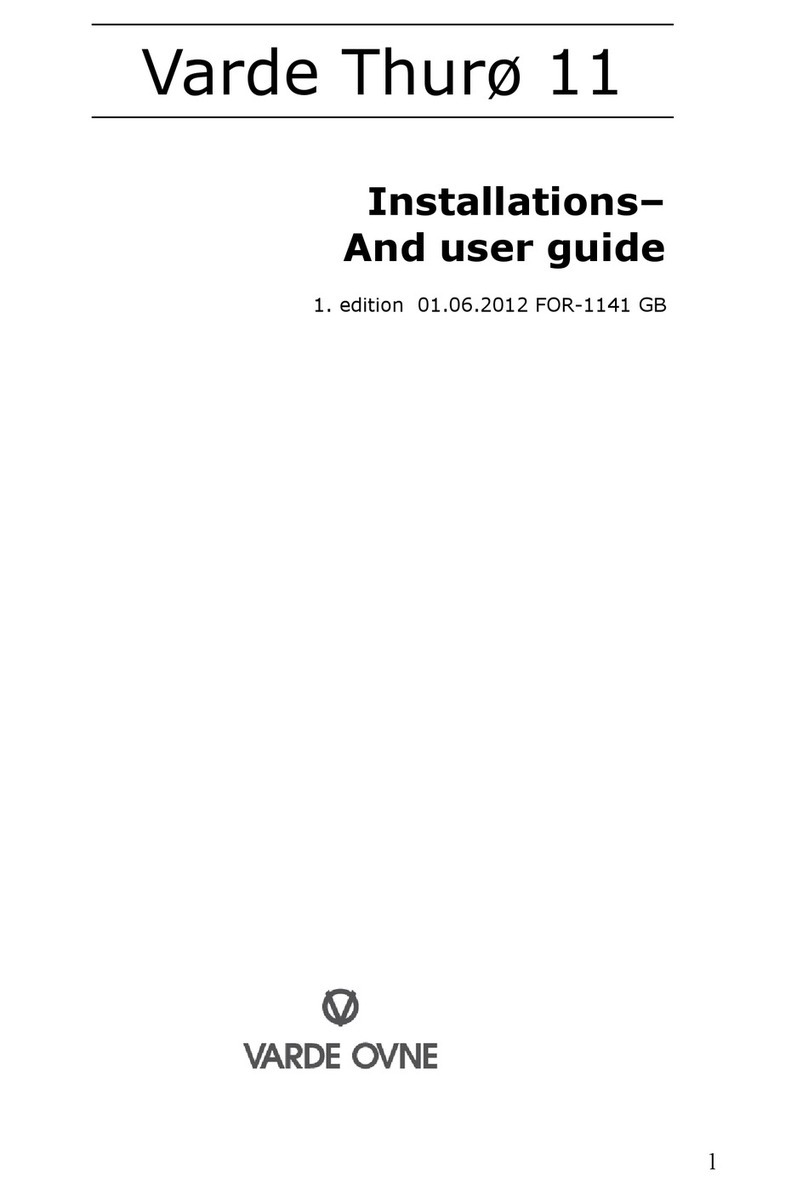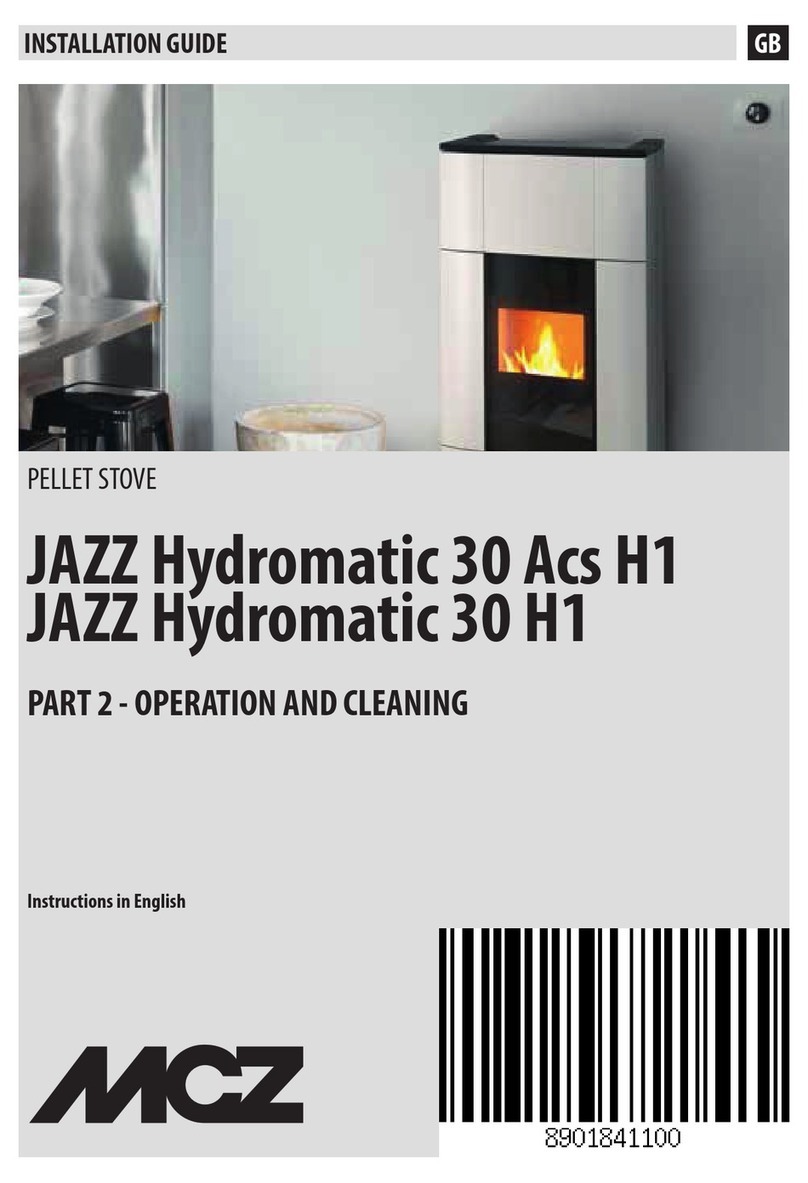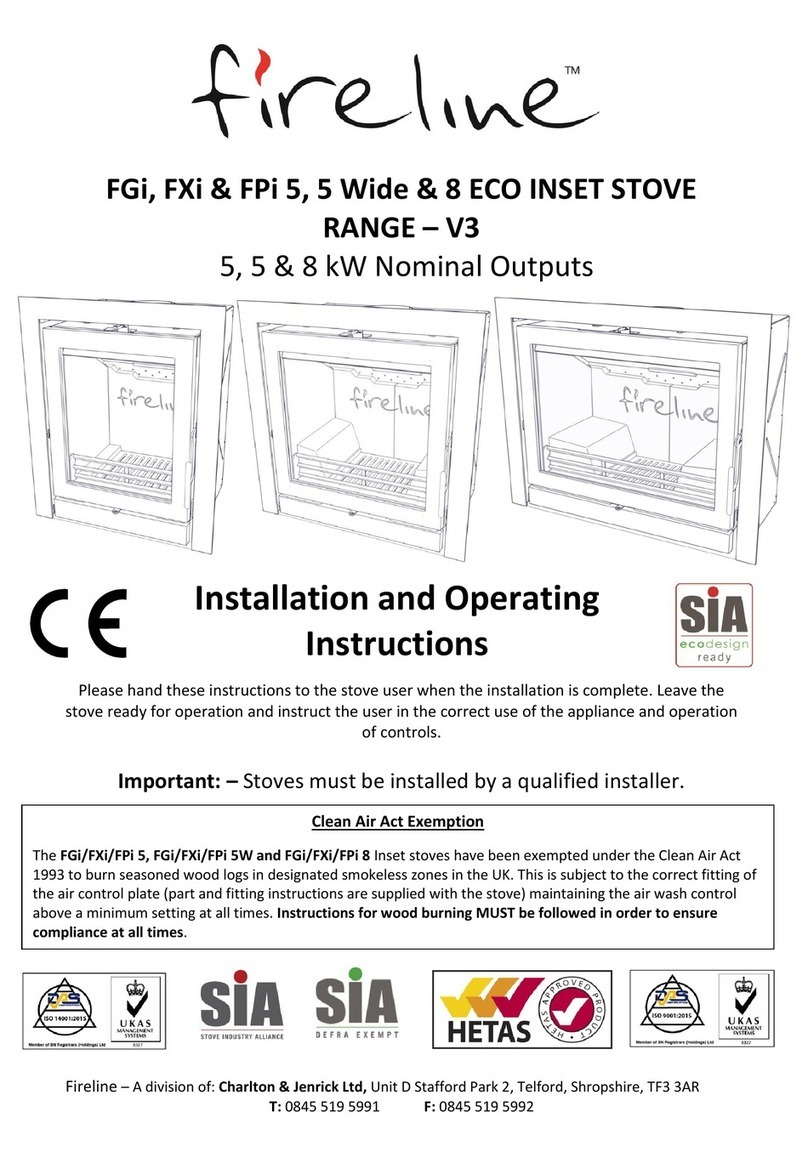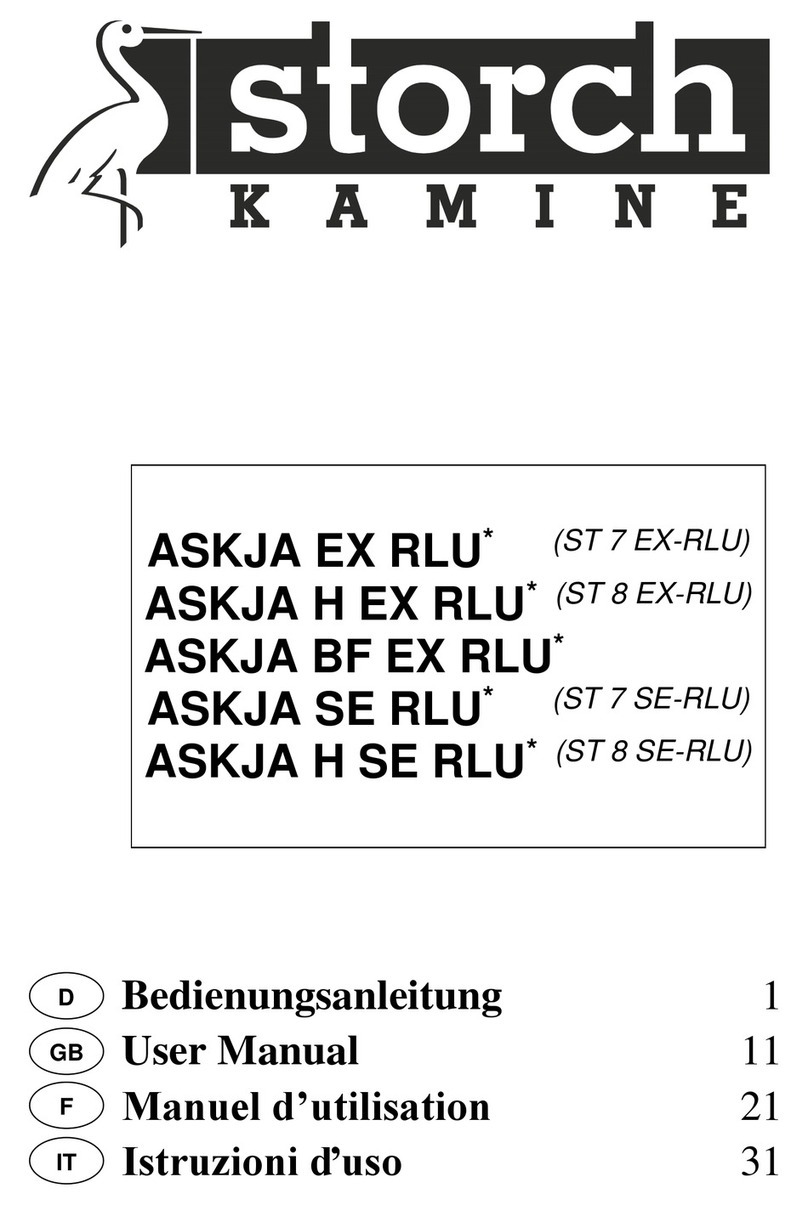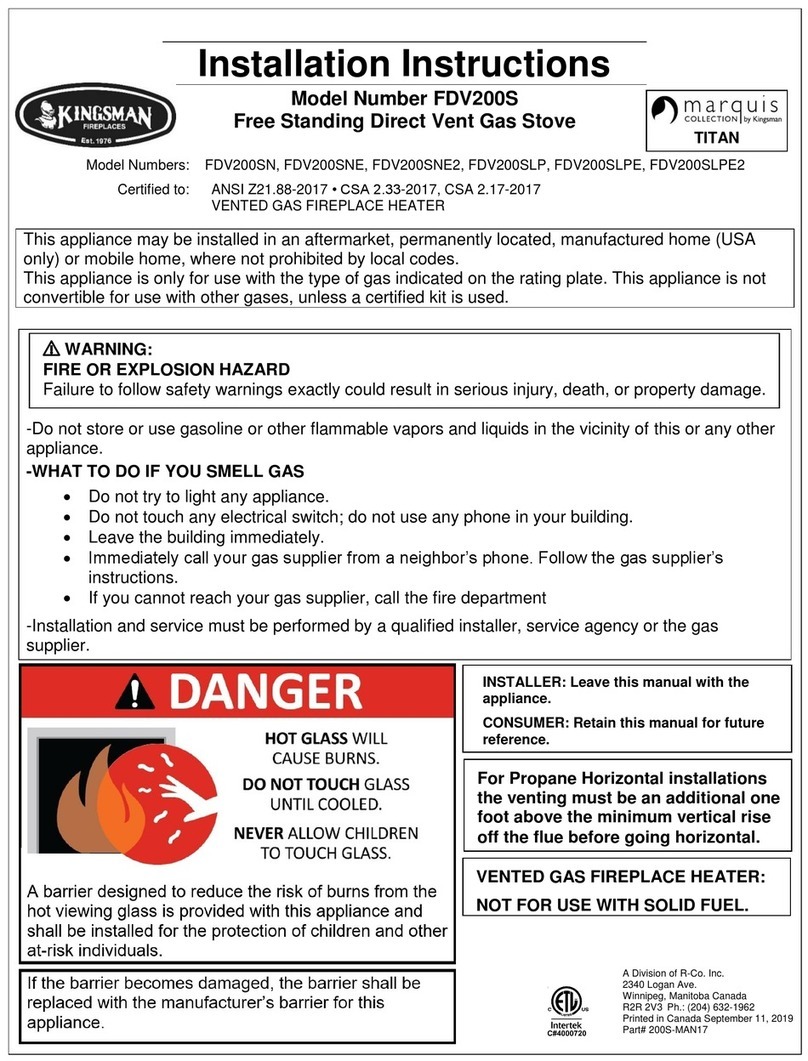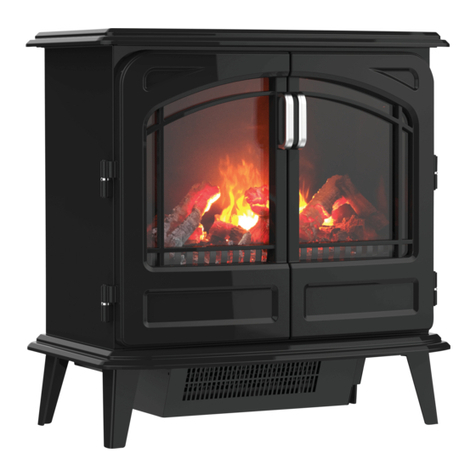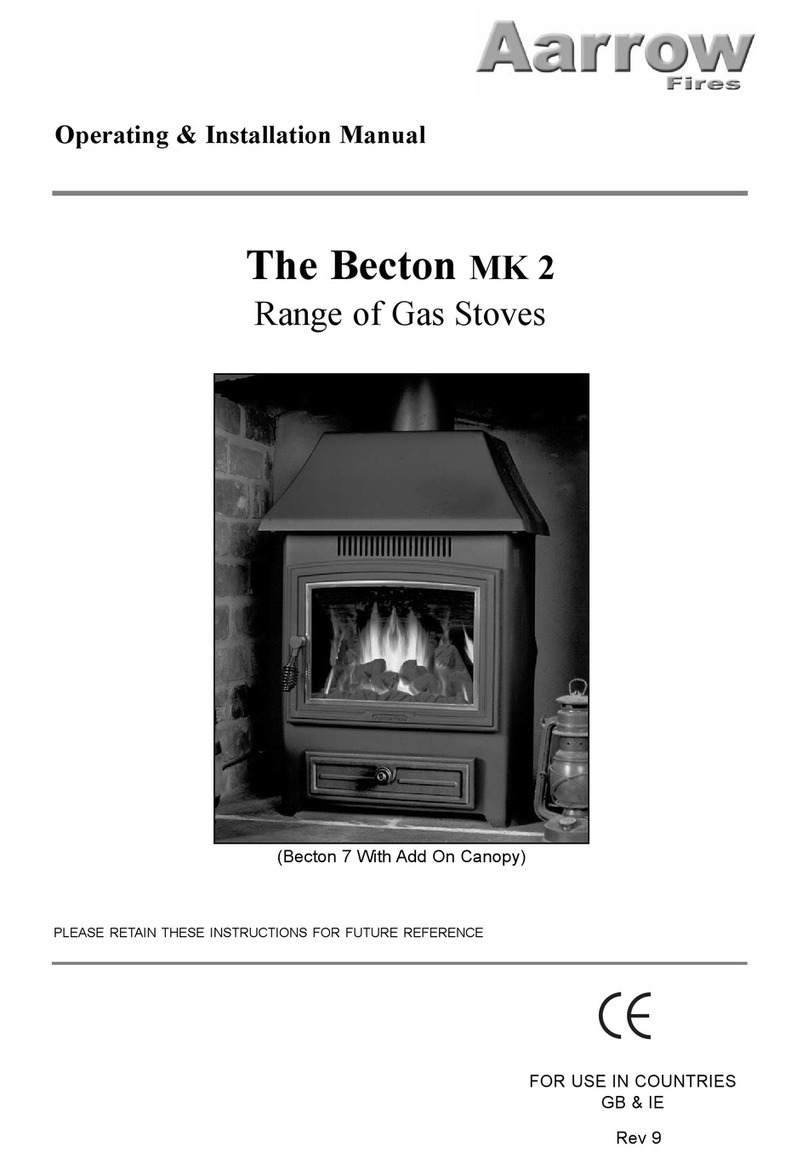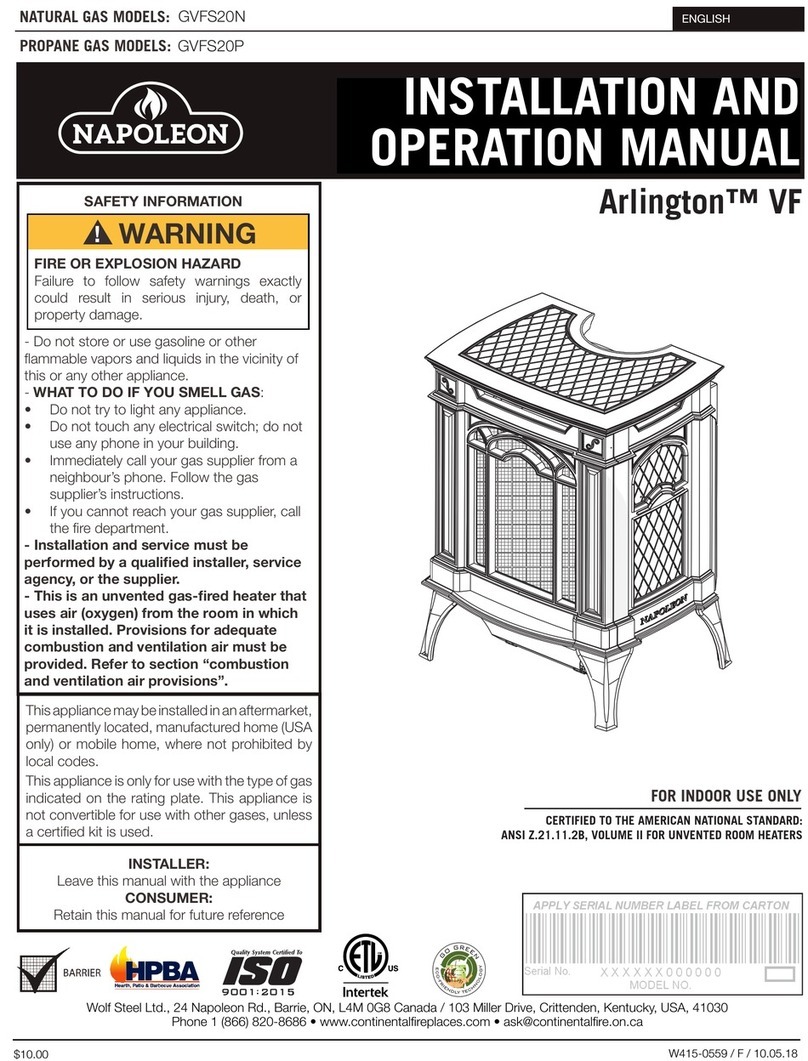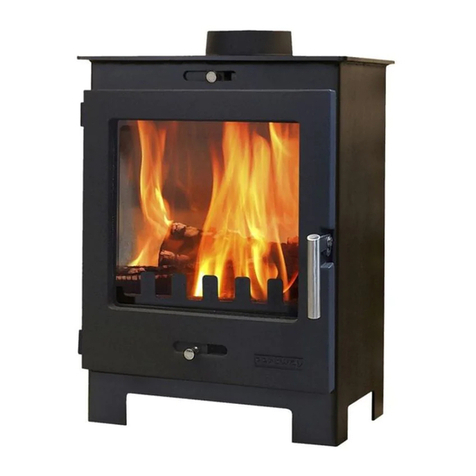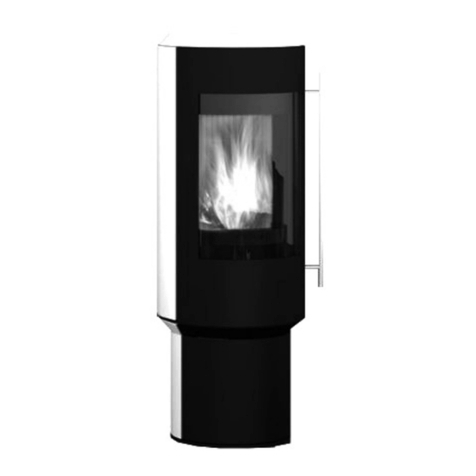8
Wood burning creosote build-up
Wood combustion is never 100% complete, wood smoke
always contains some unburned material. A little of this
will condense on a cool surface, leaving a dark brown or
black substance that has an acrid odour. This substance is
commonly called creosote. If the exhaust gases condense
on cool surfaces such as a cold chimney, they will retain
large amounts of water. At higher temperatures, the
condensed creosote will resemble tar.
Creosote generation is highest during low heat outputs
common with long, smouldering burns. Creosote
generation is lowest during high heat outputs common
with intense fires. For best results against creosote build-
up, it is recommended that a small, intense fire be used,
even though refuelling may need to take place more
often.
Creosote generation is also higher when burning wood
with a high moisture content, such as green wood. The
moisture in the wood absorbs heat from the fire, cooling
it below the point at which the creosote can be
consumed. The low-temperature smoke is then cooled
further in the chimney.
To reduce the likelihood of creosote build-up during
periods of low heat demand, it is recommended to fuel
the boiler with lower quantities of smaller diameter logs.
Matching fuel loads and heat requirements will result in
cleaner combustion and higher efficiency.
TROUBLESHOOTING
If a fire occurs in the chimney, immediately close the air
regulator wheel and air wash to cut off the fire's oxygen
supply. Evacuate the building and call the fire services; do
not use the stove until it has been certified safe by a
qualified HETAS engineer, any necessary repairs have
been made, and the chimney has been swept.
If smoke collects inside the building, close the air
regulator wheel and air wash. Open windows and doors
to allow the smoke to escape. Do not use the stove until
the source of the problem has been repaired.
Fuel quality
Poor quality fuel can lead problems lighting the stove or
maintaining a steady burning rate, poor flame with excess
smoke, excess dirt build-up, or staining, on the glass and
inside the combustion chamber, and reduced life spans
for the internal components, such as fire bricks and
bottom grate.
When burning wood, in addition to the above, wet fuel
may cause excess creosote build-up in the flue and
discoloured chimney smoke.
Flue draught
The flue must operate under pressure that is, there
should be a constant "pull" up the chimney to allow the
hot flue gases to escape safely. The flue draught can be
affected by structures that are too close to the flue
termination, extreme winds extreme temperatures,
incorrect combustion air, a blocked flue or incorrectly-
sized flue. Ensure the required ventilation openings are
kept permanently free of obstructions.
If fuel consumption is too high or overheating occurs,
these may be caused by excessive flue draught. If the fire
will not light or maintain a steady burning rate, if the heat
output is too low, or smoke remains in the combustion
chamber, these may be caused by inadequate flue
draught.
Blow-back
Blow-back small explosions that force air through the fire
door seals or air controls is caused by inadequate
combustion air; for example, if the door is closed too
early or the air regulator wheel and air wash are not open
wide enough after adding new fuel.
MAINTENANCE
Before cleaning the stove, ensure it has fully cooled.
Routine maintenance can be carried out by the end user.
The throat plate should be removed and cleaned monthly.
The flue pipe can be cleaned by using a flexible brush.
Only use a damp sponge for external surfaces. Over time,
the fire door glass may become dirty; to clean, wipe with
a damp cloth and polish with a dry one.
The stove should be fully serviced and the chimney swept
on an annual basis by qualified engineers.
It may eventually become necessary to re-coat the matt
black external surfaces of the stove; always use a paint or
spray specifically designed to withstand high
temperatures.
The ideal time for servicing is just after the end of the
heating season, as the stove will not be in use. While
dormant, the stove should be emptied of ash and fuel,
and left with the air regulator wheel and air wash open;
this will help prevent condensation build up, which can
reduce the stove's life expectancy.
After a prolonged shutdown, the flue should be checked
for blockages before use.
Do not modify the appliance; only use spares authorised
by the manufacturer.























